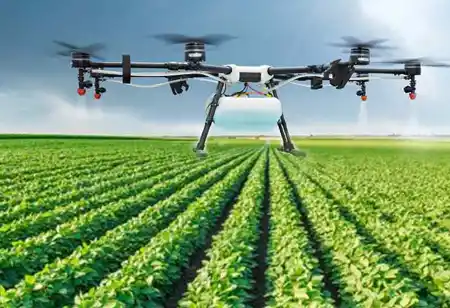Thank you for Subscribing to Agri Business Review Weekly Brief
Preparing for the future of agriculture through sustainability and efficiency
By 2030, the global middle class will reach almost 5 billion people, with a share almost quintupling in the past three decades.

By
Agri Business Review | Friday, August 25, 2023
Stay ahead of the industry with exclusive feature stories on the top companies, expert insights and the latest news delivered straight to your inbox. Subscribe today.
The agriculture input market is expected to grow by an average of 3% annually over the next decade, driven by population growth, protein demand, and climate change pressures. The global market for food, feed, and fuel is expected to rise significantly due to population growth and the expansion of the international middle class.
Fremont, CA: By 2030, the global middle class will reach almost 5 billion people, with a share almost quintupling in the past three decades. As a result, food consumption patterns are becoming more diverse and demanding.
Agriculture must efficiently and responsibly use natural resources to meet growing demands for quality food supply.
Climate change and soil erosion are causing farming to lose 12 million hectares of land and 1.3 billion tons of food annually. Sustainable solutions are crucial for addressing environmental challenges and unlocking untapped market potential.
Climate change has led to resource scarcity, harvest loss, and soil degradation, with the world's agriculture industry facing unprecedented challenges by 2050. To tackle these challenges, the global agriculture industry must advance sustainability and economic efficiency through innovation. The crop science industry, a global growth market, includes various technologies and approaches, including chemistry, biology, biotechnology, data science platforms, and new business models like vertical or carbon farming. Adding new technologies to provide integrated solutions for farmers and driving digitalization and sustainability will be crucial for transforming the industry. Smart agriculture, for example, can unlock billions of additional value by ensuring widespread connectivity within and across farms. Technologies like drone farming can boost yields by enabling farmers to monitor crops frequently and intervene remotely. Agriculture connectivity could unlock over $500 billion in GDP by 2030. Innovations from genetics to farm operations can significantly reduce the environmental footprint of global agriculture, including reducing carbon emissions and protecting biodiversity through digitally enhanced farming practices. New gene editing technologies, like CRISPR/CAS9, could significantly improve crop resistance to weather extremes and diseases while increasing resource efficiency.
Global agriculture faces numerous critical challenges, but these opportunities provide new opportunities for innovation-driven leaders to overcome and thrive in the global landscape.





